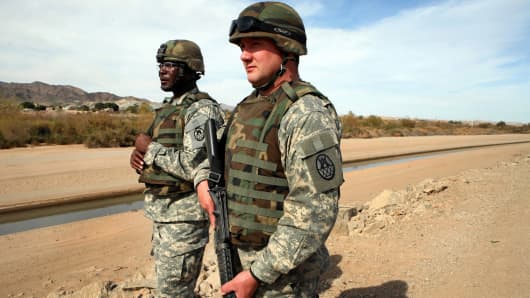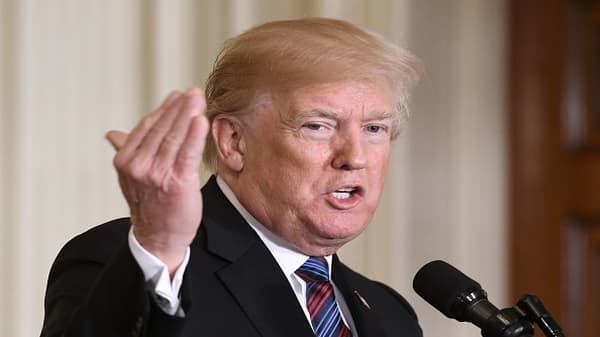Source: US Customs and Border Patrol,Princeton Policy Forecasts
Of course, other, more dangerous drugs are also smuggled in. These mostly enter through legal crossing points, the interdiction of which requires more customs personnel rather than troops in the field. Still, some hard drugs are brought in on foot away from official crossing points.
Of these, only methamphetamines are showing notable growth, with some fentanyl appearing in small, if potent, quantities. In total, only 20,000 pounds of hard drugs are forecast to be seized by Border Patrol in 2018 – the equivalent of two backpacks' worth per day. This hardly constitutes a 'drastic surge.'
Why then dispatch the National Guard?
President Trump is not the first to do so. Both Presidents Bush and Obama dispatched National Guard Units to the border. Under Bush, the Guard was deployed from 2006 to 2008 under Operation Jump Start. Obama sent the National Guard in 2010 during Operation Phalanx. In each case, the Guard was intended to supplement Border Patrol personnel while new recruits were added to increase border protection capability. Trump's initiative can be seen in a similar light.
The intention to deploy the Guard is best understood as symbolic. Both Presidents Bush and Obama deployed the Guard to the border in a run-up to a difficult midterm elections. President Bush's Operation Jump Start began in May 2006, five months before the midterm elections which saw the Democrats retake the House, the Senate and a majority of the governorships from the Republican Party.
President Obama's Operation Phalanx began in July 2010, four months before the Democrats were routed in the midterm elections of that year. Those midterms saw the worst reverses for the Democrats since the Great Depression. The Republicans retook the House, added six seats in the U.S. Senate, and gained 680 seats in state legislative races, breaking the previous record of 628 set by Democrats following the Watergate scandals.
President Trump's Guard deployment can be considered as one element in a wider political package which includes, for example, recent steel tariffs. In 2002, President Bush also imposed steel tariffs at virtually the same point in his term with an eye to firming up support in the swing states of Pennsylvania, Ohio, and West Virginia. President Trump announced the current tariffs just before a special election in steel country near Pittsburgh.
The proper read on Guard deployment, therefore, is that it has almost nothing to do with securing the border and everything to do with shoring up the Republican Party's political prospects. This in turn tells us two things. First, the President, despite his shoot-from-the-hip style, is in fact receiving—and taking—political advice on traditional Republican tactics to buttress the Party's electoral prospects.
Further, given the brutal defeats suffered by both Bush and Obama in the 2006 and 2010 midterms respectively, and given that the current Guard deployment was announced even earlier than in those years, the White House is bracing for electoral Armageddon come November.
Migrants and border control have nothing to do with it. Despite the bravado coming from the president, the truth is that the White House is running scared.
Commentary by Steven Kopits, president, Princeton Policy Advisors.
For the latest CNBC commentary follow @CNBCopinion on Twitter.






